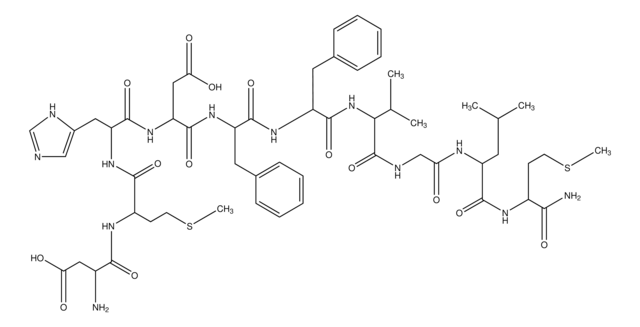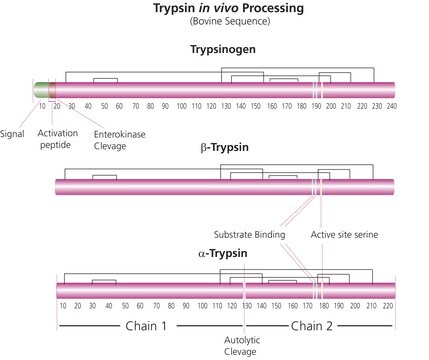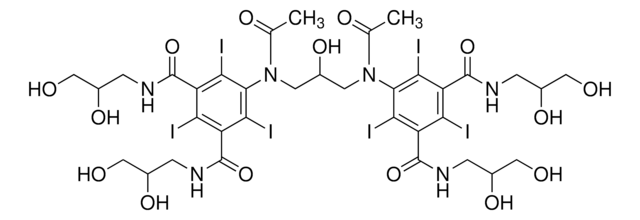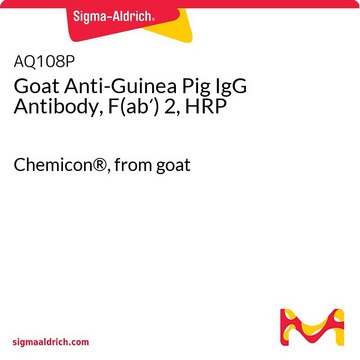P0290
Phenol red solution
0.5%, liquid, sterile-filtered, BioReagent, suitable for cell culture
Synonym(s):
Phenolsulfonphthalein solution
Sign Into View Organizational & Contract Pricing
All Photos(1)
About This Item
CAS Number:
MDL number:
UNSPSC Code:
12352207
PubChem Substance ID:
NACRES:
NA.75
Recommended Products
sterility
sterile-filtered
Quality Level
product line
BioReagent
form
liquid
concentration
0.5%
technique(s)
cell culture | mammalian: suitable
impurities
endotoxin, tested
SMILES string
O=S1(C2=CC=CC=C2C(C3=CC=C(O)C=C3)(C4=CC=C(O)C=C4)O1)=O
InChI
1S/C19H14O5S/c20-15-9-5-13(6-10-15)19(14-7-11-16(21)12-8-14)17-3-1-2-4-18(17)25(22,23)24-19/h1-12,20-21H
InChI key
BELBBZDIHDAJOR-UHFFFAOYSA-N
Looking for similar products? Visit Product Comparison Guide
General description
Phenol red belongs to the class of triphenylmethane dyes and is widely used in the textile industry.
Application
Phenol red solution has been used:
- as a tracer dye for microinjection of zebrafish eggs
- as a component of the mMW medium for the preparation of mouse embryos
- in the preparation of versene-ethylenediamine tetraacetic acid (EDTA) solution
- as a pH indicator in Dulbecco′s modified Eagle medium (DMEM) during glycolytic stress (GST) tests and mitochondrial stress tests (MST) to evaluate metabolic function in cells.
Biochem/physiol Actions
Phenol red solution acts as a pH indicator for the culture medium.Phenol red solution acts as a pH indicator for the culture medium that turns yellow at a pH of 6.4 or lower and changes into red at a pH of 8.2 or higher. It enables a fast and simple assessment of the culture′s health. In addition to its application as a pH indicator in culture mediums, Phenol red is used to detect human peroxidase enzyme activity, as well as cellular hydrogen peroxide levels, in various experiments.
Features and Benefits
High-quality, endotoxin-tested solution, suitable for mammalian cell culture.
Preparation Note
Prepared in Dulbecco′s Phosphate Buffered Saline.
Storage Class
12 - Non Combustible Liquids
wgk_germany
WGK 2
flash_point_f
Not applicable
flash_point_c
Not applicable
Choose from one of the most recent versions:
Already Own This Product?
Find documentation for the products that you have recently purchased in the Document Library.
Customers Also Viewed
Shivshankar R Mane et al.
Small (Weinheim an der Bergstrasse, Germany), 14(36), e1801571-e1801571 (2018-08-07)
Recent advances in super-resolution microscopy and fluorescence bioimaging allow exploring previously inaccessible biological processes. To this end, there is a need for novel fluorescent probes with specific features in size, photophysical properties, colloidal and optical stabilities, as well as biocompatibility
Natacha Merindol et al.
Journal of clinical virology : the official publication of the Pan American Society for Clinical Virology, 128, 104423-104423 (2020-05-18)
Rapid and reliable screening of SARS-CoV-2 is fundamental to assess viral spread and limit the pandemic we are facing. In this study, we compared direct rRT-PCR method (without RNA extraction) using SeeGene AllplexTM 2019-nCoV rRT-PCR with the RealStar® SARS-CoV-2 rRT-PCR
Faiza Basheer et al.
Bio-protocol, 10(5), e3536-e3536 (2021-03-05)
The study of host-pathogen interactions has improved our understanding of both pathogenesis and the response of the host to infection, including both innate and adaptive responses. Neutrophils and macrophages represent the first line of innate host defense against any infection.
S F Gabby Krens et al.
BMC genomics, 9, 196-196 (2008-04-30)
The MAPK signaling proteins are involved in many eukaryotic cellular processes and signaling networks. However, specific functions of most of these proteins in vertebrate development remain elusive because of potential redundancies. For instance, the upstream activation pathways for ERK1 and
Ngoc Tung Tran et al.
STAR protocols, 1(1), 100028-100028 (2020-07-21)
Mutations that accumulate in self-renewing hematopoietic stem and progenitor cells (HSPCs) can cause severe blood disorders. To model such disorders in mice, we developed a CRISPR/Cas9/adeno-associated virus (AAV)-based system to knock in and repair genes by homologous recombination in mouse
Our team of scientists has experience in all areas of research including Life Science, Material Science, Chemical Synthesis, Chromatography, Analytical and many others.
Contact Technical Service







